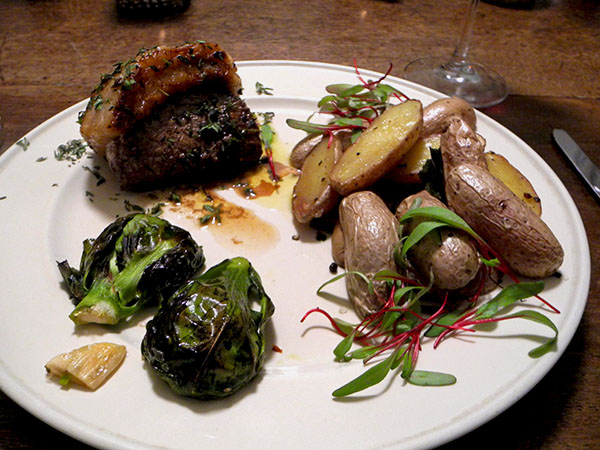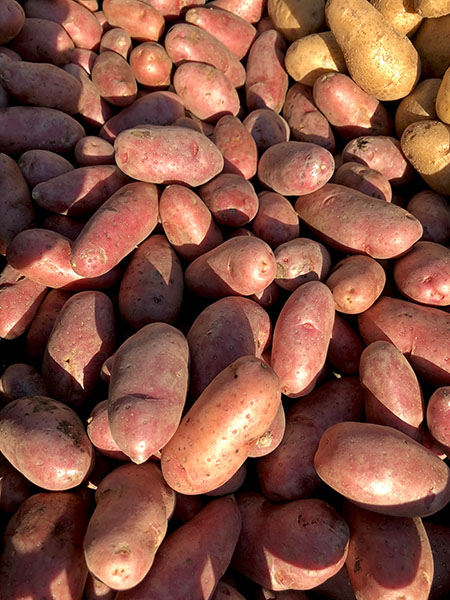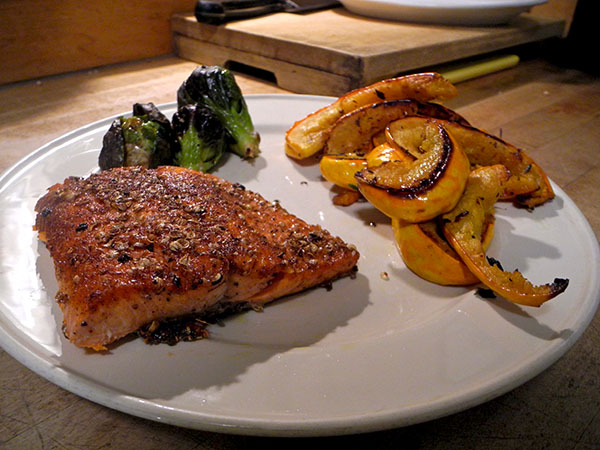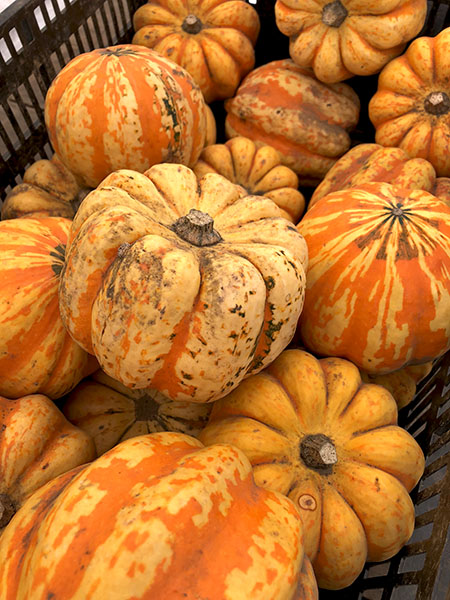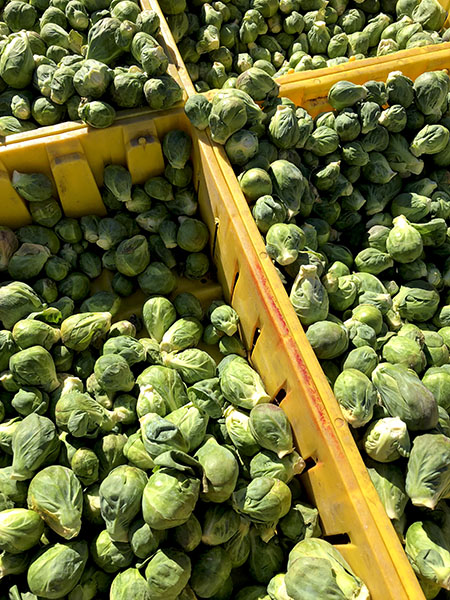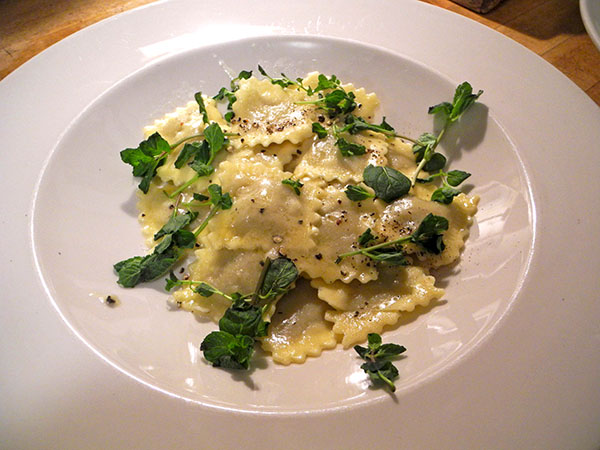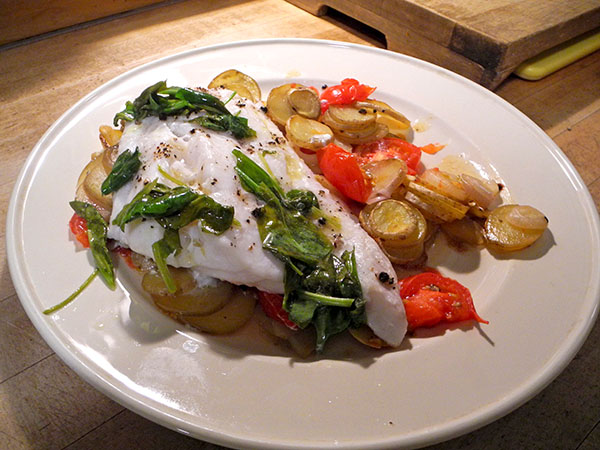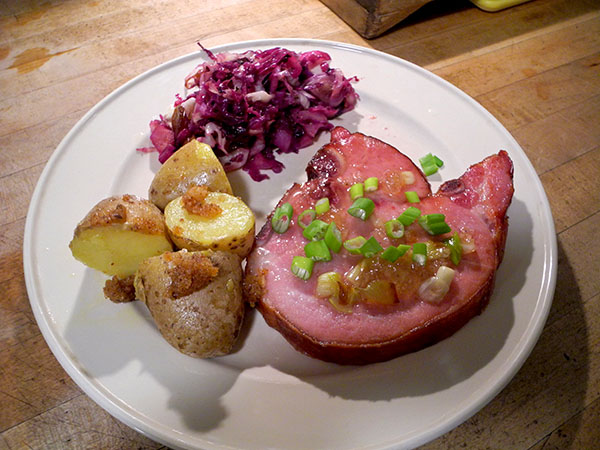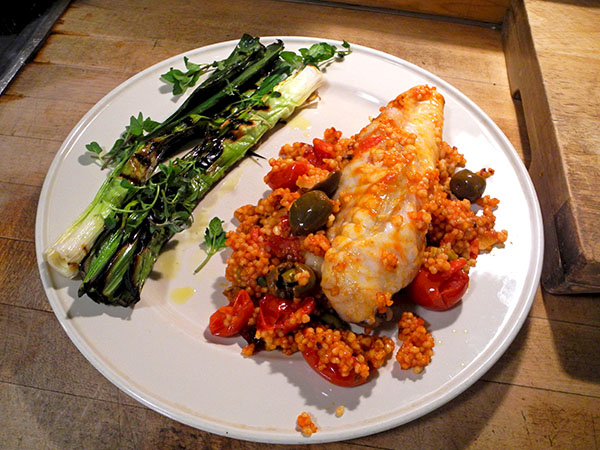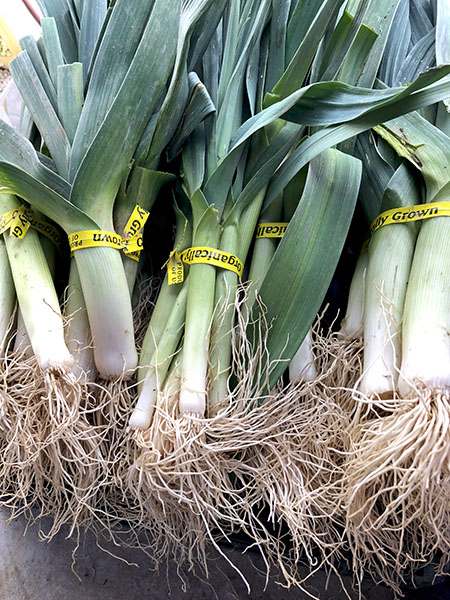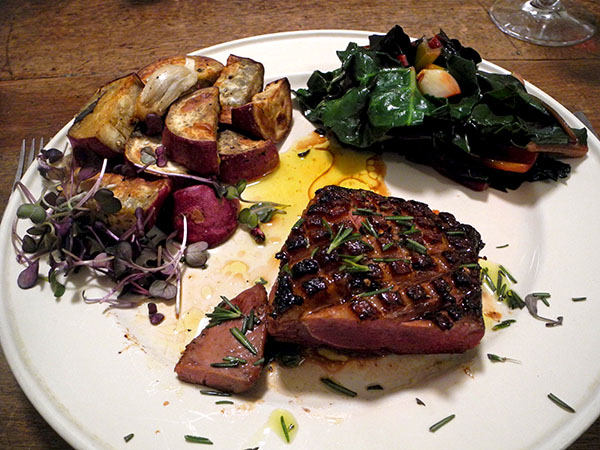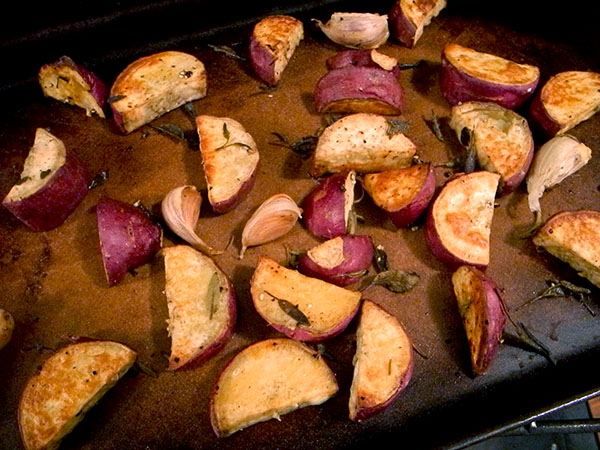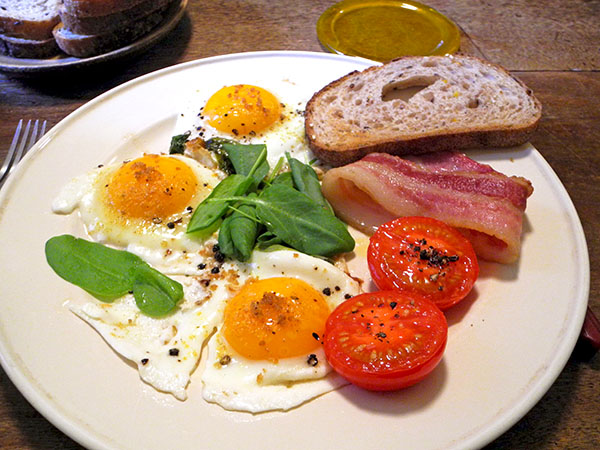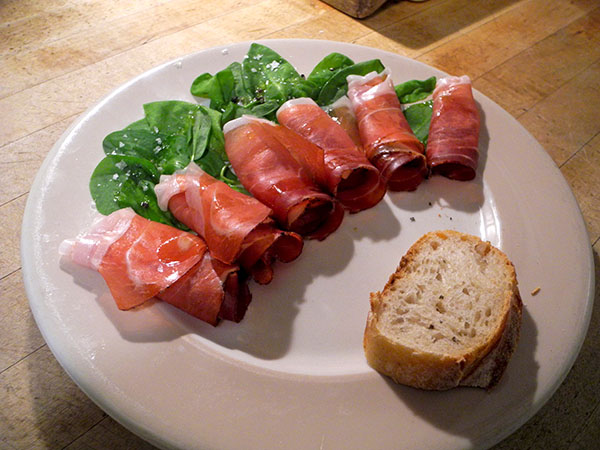
It was St. Valentine’s Day, so there was a lot of red, -ish.
The antipasto was created elsewhere, although assembled in our kitchen.
- five or 6 ounces of thinly-sliced Recla Speck Alto Adige IGP, from Bolzano, purchased at Eataly, drizzled lightly with a very good Sicilian olive oil, from from Agricento, Azienda Agricola Mandranova (exclusively Nocellara olives), arranged on a fan of sorrel leaves from Two Guys from Woodbridge, sprinkled with Maldon salt and freshly-gorund black pepper, also drizzled with the Sicilian olive oil
- slices of a rustic whole loaf of bread which included both potato and oregano, from Eataly

The pasta course was also dominated by goodies from Eataly, since that afternoon I had neither the time nor the energy to wander any further abroad for ingredients. The dish was based on an Epicurious recipe I found on line once I returned home, which I then proceeded to halve for just the two of us.
- I added a little cognac just before introducing the tomatoes to the pan, and then turned the heat up high to evaporate its alcohol, but otherwise I made almost no changes to the recipe; the ingredients included approximately 9 ounces of fresh spaghetti pasta from Luca Donofrio‘s fresh pasta shop inside Eataly’s Flatiron store, sea salt, Portuguese olive oil from Whole Foods Market, Organic Valley ‘Cultured Pasture Butter’, half of a shallot from Norwich Meadows Farm, half of a teaspoon of crushed dried pepperoncino Calabresi secchi from Buon Italia, 9 ounces of ripe Backyard Farms Maine ‘cocktail tomatoes’ from Whole Foods Market, just under half a pound of picked cooked lobster meat (almost entirely claw meat) from Eataly, freshly ground black pepper, half a teaspoon of zest from an organic Whole Foods Market lemon, garnished with parsley from Whole Foods Market, with lemon wedges served on the side once the pasta had been placed on the table
- the wine through the first 2 courses was a French (Champagne) sparkling white, Eric Rodez, Champagne Brut “Cuvee des Grands Vintages”, NV, from Flatiron Wines
There was a small cheese course that featured absolutely nothing red-ish.
- ‘Mammuth’ goat cheese from Ardith Mae
- toasted slices of a loaf of French sourdough, ‘Levain’, from Bread Alone
- the wine with the cheese course was a California (Napa) sparkling white, Keith Hock Exit 43 California Bollicine in Bianco, from Naked Wines
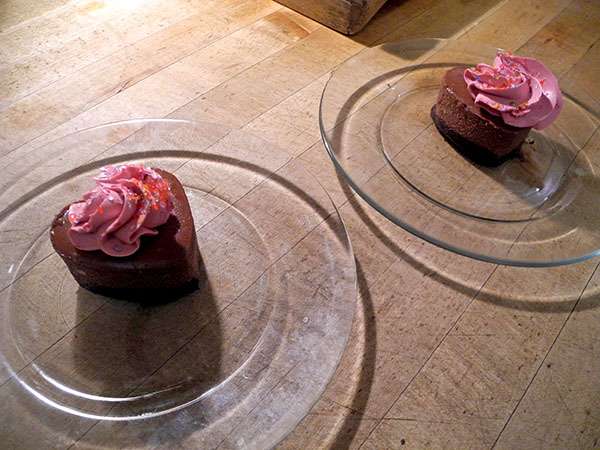
The sweet was put off until the next day (I had actually forgotten to serve it), but I still want to include it here.
- two heart-shaped chocolate cheese cakes with a raspberry froufrou on top that had been sprinkled with sugary glitter

- (is purple also red-ish?) after the sweet (the next day) we enjoyed a short glass of a fairly rare Italian (Sardinia) digestif, Tremontis Mirto dell’Isola di Sardegna, from Eataly Vino
